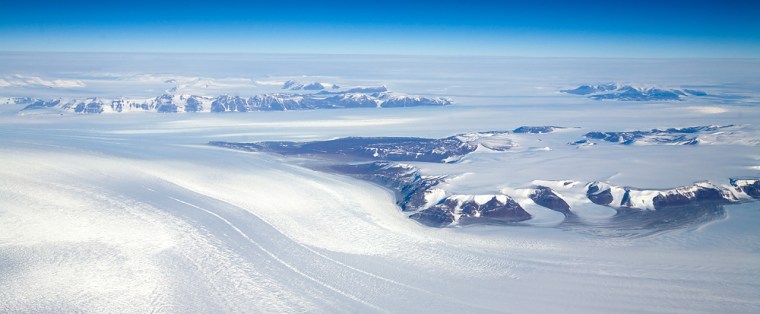World sea levels might not rise as much this century as projected earlier, but they could rise nearly three feet next century and will keep rising for more than 1,000 years even if governments manage to reduce carbon emissions, a draft United Nations climate report says.
The chairman of the upcoming U.N. report said he hoped the findings would shock governments into action.
“I hope this report will shock people, governments into taking more serious action as you really can’t get a more authentic and a more credible piece of scientific work,” Rajendra Pachauri told Reuters.
He did not elaborate on what was in the report, but scientific sources said the study also says that dust from volcanic eruptions and air pollution seems to have braked warming in recent decades by reflecting sunlight back into space.
The Intergovernmental Panel on Climate Change will publish its first chapter from the report, the most complete overview of climate change science, in Paris on Feb. 2 after a final review. Written by 600 scientists, and reviewed by another 600, the first chapter will guide policymakers combating global warming.
The draft projects more droughts, rains, shrinking Arctic ice and glaciers and rising sea levels, cautioning that the effects of a buildup of greenhouse gases in the atmosphere will last far beyond this century.
“Twenty-first century anthropogenic (human) carbon dioxide emissions will contribute to warming and sea level rise for more than a millennium, due to the timescales required for removal of this gas,” the sources quoted the report as saying.
Temperature scenarios
As reported earlier, the draft projects temperatures will rise by 3.6 to 8.1 Fahrenheit above pre-industrial levels with a “best estimate” of a 5.4 F rise, assuming carbon dioxide levels are stabilized at about 45 percent above current levels.
That is a narrower range than the 2.5-10.4 F projected in the previous IPCC report in 2001, which did not say which end of the band was most likely.
The European Union says any temperature rise above 3.6 F will cause “dangerous” changes.
And the draft report itself notes that sea levels were probably 13 to 19.5 feet higher when temperatures were just 5.4 F higher than the present in a period between ice ages 125,000 years ago.
Sea level scenarios
The draft cites six computer models with central projections of sea level rises this century of between 11 and 16.9 inches — compared to a far wider band of 3.5 to 34.6 inches in the 2001 report.
Stabilizing carbon dioxide levels would lead to a further temperature rise of about 0.8 F, mostly between 2100-2200, and push up sea levels by a further 11 to 31 inches by 2300 with decreasing rates in later centuries, the draft report said.
Sea levels rose by 6.7 inches in the 20th century. Rising seas would threaten low-lying Pacific islands, coasts from Bangladesh to Florida and cities from Shanghai to Buenos Aires.
The draft report says it is “very likely” — or more than a 90 percent chance — that human activities, led by burning fossil fuels, are to blame for warming since 1950.
The previous report in 2001 said the link was “likely,” or at least 66 percent.
Lingering uncertainties include whether higher temperatures will bring more clouds — their white tops bounce heat back into space.
The Gulf Stream, bringing warm waters to the North Atlantic, was likely to slow but not enough to offset an overall warming. And there was scant chance of an abrupt shutdown of the ocean current system by 2100.
Panel chief cites Arctic melt
Pachauri said the report would show mounting evidence that greenhouse emissions are causing temperature increases, sea level rises, the melting of glaciers, freak weather phenomena and the problems of water availability.
"For example, the Arctic is clearly melting at faster rates than other regions of the world," he said. "The figures are in the report and it is much faster than what was anticipated."
"The impacts are clearly very serious for some vulnerable parts of the world," he added. "Small island states are clearly very vulnerable and parts of South Asia are vulnerable in respect of droughts and floods and also the melting of the glaciers."
Pachauri said skepticism about the linkages between human activities and climate change was dwindling as more evidence came to light.
"I think the skeptics on climate change will continue, but the good news is that their numbers and their effectiveness is on the decline," he said. "The gaps in knowledge will always be there in science, but you use your judgement and that's what good policy is all about ... If you take action, the benefit is that you might actually be minimizing the harmful impacts of global warming."
